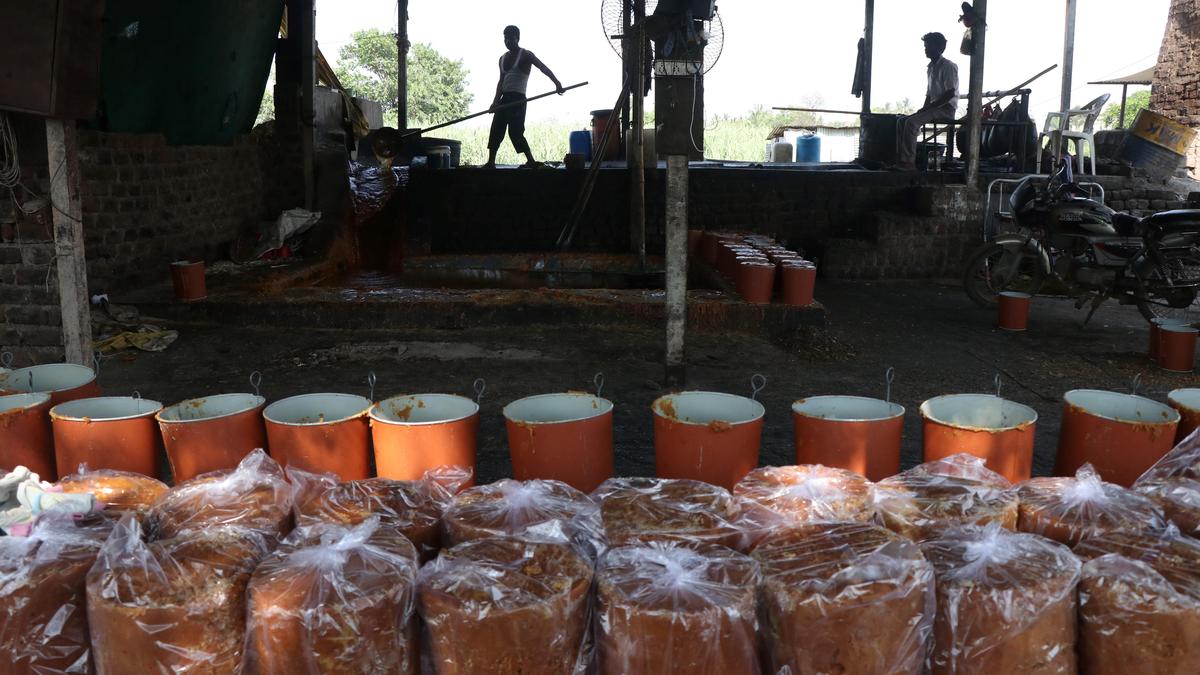Copyright thehindubusinessline

The Maharashtra government has drafted a new law to regulate the jaggery industry, but it has evoked mixed reactions from producers. While some have welcomed the step as a much-needed measure to curb the sale of raw sugar disguised as jaggery powder and ensure quality control, others fear that the new law could further stifle an already struggling cottage industry. The State government aims to bring the largely unorganised jaggery sector under formal regulation. A committee of senior officials and experts has been formed to draft the law, which is expected to be ready soon. Once finalised, the draft will be discussed by the cabinet subcommittee and then placed before the state cabinet for approval and enactment. Regulation and formalisation Spread across the State’s sugar belt, the jaggery industry has traditionally operated in an informal setup, with large cash-based transactions often taking place outside official records. This lack of structure has led to frequent financial disputes between sugarcane farmers and jaggery manufacturers, leaving both parties with little legal protection. Through the new legislation, the government seeks to introduce transparency, discipline, and accountability to the sector, similar to the cooperative sugar factory model. The proposed law is expected to make registration of jaggery units mandatory and establish norms for cane purchase, pricing, production standards, and marketing. It may also require formal contracts between farmers and jaggery units to safeguard both sides’ interests. Industry voices For many producers, the move has been long overdue. “It is a welcome step by the government. We face several challenges as jaggery producers. There are players who sell raw sugar as jaggery powder, and there’s no fixed definition of what jaggery actually is. The new law could help define this clearly,” said Rohan Kolse, owner of Kolse Natural Sweetener Industries, Sangli. Kolse added that the lack of clarity affects exports as well. “Many exporters sell raw sugar cheaply in the name of jaggery, which hurts genuine producers and the reputation of Indian jaggery in international markets.” However, not everyone is optimistic. Ram Patil, a Kolhapur-based producer and owner of Jotirling Jaggery, believes that the law will do little to support the sector. “This is a small cottage industry that’s already shrinking due to rising competition. With sugar mills offering higher Fair and Remunerative Prices (FRP) every year, farmers prefer to sell their produce to mills instead of us. The government should support and encourage us, not bring restrictive rules that could push us further into decline,” he said. Patil emphasised that the jaggery industry plays a vital role in rural economies by generating employment and sustaining livelihoods. “Instead of putting us under a rigid legal framework, the government should create incentives and infrastructure to strengthen rural enterprises,” he added. Industry at the Crossroads Jaggery—an unrefined natural sweetener made without chemicals—is deeply rooted in India’s rural economy and dietary culture. Over 70 per cent of global jaggery production takes place in India, which is recognised as one of the world’s leading producers and exporters. Known as “medicinal sugar,” jaggery is rich in nutrients and often compared to honey for its health benefits. Maharashtra, along with Uttar Pradesh, ranks among the top jaggery-producing States in the country. Yet, despite its importance, the jaggery sector remains largely unorganised, operating in small, rural processing units with limited access to technology or formal finance. According to the IMARC Group, India’s packaged jaggery market reached ₹71.3 billion in 2024 and is expected to grow to ₹202.6 billion by 2033, with a compound annual growth rate (CAGR) of 11.69 percent during 2025–2033. Experts say that with proper regulation, Maharashtra could capture a larger share of this growing market. The new law, therefore, represents both an opportunity and a challenge: an opportunity to modernise and formalise the jaggery trade, and a challenge to ensure that small producers — the heart of the rural jaggery economy — are not left behind. Published on October 31, 2025



